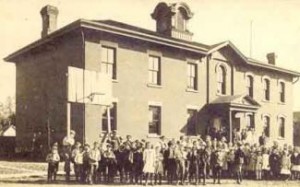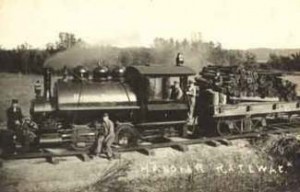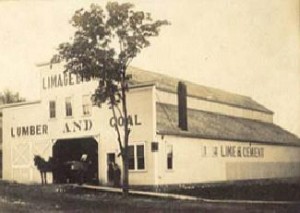About Hanover
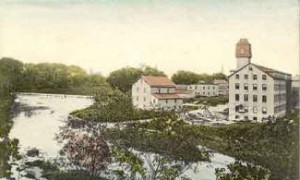 “[Hanover] was formerly called Wapello, after an Indian chief of the Sacs and Foxes, and by this name it was incorporated February 12, 1849. The name was afterwards changed to Hanover, and this was the second incorporated city or village within the county. It is now an active, energetic, thriving business place, and its people are among the most cultured and intelligent in the county.”
“[Hanover] was formerly called Wapello, after an Indian chief of the Sacs and Foxes, and by this name it was incorporated February 12, 1849. The name was afterwards changed to Hanover, and this was the second incorporated city or village within the county. It is now an active, energetic, thriving business place, and its people are among the most cultured and intelligent in the county.”
– Historical Encyclopedia of Illinois and History of Jo Daviess County, Hon. William Spensley, Chicago, 1904
Hanover, Illinois, is located in Jo Daviess County in the northwest corner of Illinois, within five miles of the Mississippi River. State Highway 84, part of the scenic Great River Road, runs through the center of town. The Apple River, a tributary to the Mississippi, winds through and around Hanover. The present site of Hanover was a Sac and Fox Indian village when white settlers came to farm the area in 1828. A natural drop in the Apple River made the location ideal as a dam and mill site, the first of which was built in 1829 by James Craig. The settlement was initially known as “Craigsville,” but in 1838 Craig laid out and platted the streets in the village and renamed the community Wapello after the chief of the Indian village.
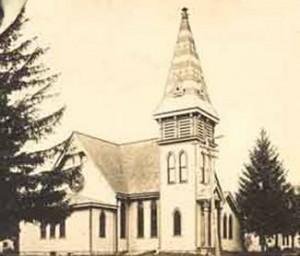 In 1849 the name was again changed, this time to Hanover. The village became incorporated in 1877. In 1863 the Hanover Woolen Mill was started, and in 1929 the organization built the large building now standing beside Crescent Falls Dam. The woolen mill operated until 1949. In 1965 the building was reopened as the Valves and Control Plant Number Two, by the Dole Valve Company, Eaton Corporation. It is currently run by Invensys, Hanover’s largest employer.
In 1849 the name was again changed, this time to Hanover. The village became incorporated in 1877. In 1863 the Hanover Woolen Mill was started, and in 1929 the organization built the large building now standing beside Crescent Falls Dam. The woolen mill operated until 1949. In 1965 the building was reopened as the Valves and Control Plant Number Two, by the Dole Valve Company, Eaton Corporation. It is currently run by Invensys, Hanover’s largest employer.
In 1917, about 13,000 acres of land outside of Hanover were bought for the development of the Savanna Proving Grounds, later known as the Savanna Army Depot. Hanover is known as the Mallard Capitol of the World: Whistling Wings, the world’s largest mallard duck hatchery, annually supplies hundreds of thousands of ducks to restaurants, wildlife refuges and research facilities all over the world.
The following vignettes are adapted from a children’s book published by local historian Terry Miller in 1980:
- In 1827 Daniel Fowler and Charles Eams paddled their canoe up the Apple River where they came upon the Indian village at the present-day site of Hanover. They laid claim to the land and returned the following spring to engage in farming.
- In 1834 John Laswell and Minerva Craig became the first couple to marry in the settlement.
- The first school opened in 1835 in a log cabin and was located on the northeastern corner of Jefferson and Washington Streets. Mr. Shunk was the teacher and was paid twelve dollars per month.
- A brick building that now houses the Hanover Supermarket was erected in 1844, and is the oldest building standing in Hanover.
- The first hotel in Hanover was erected in 1847 by Joseph Milligan and stood across from the present site of the Invensys factory. Fire struck the hotel in August 1916, and it was never rebuilt.
- On April 24, 1856, some 60 women, led by Delinda Craig, a granddaughter of Daniel Boone, marched up to 301 Jefferson St. to rid Hanover of its drinking and gambling parlor. The women tore the building down brick by brick until the walls came tumbling down.
- The main portion of the Hanover Town Hall was erected in 1848, and in 1883 an addition was added to the building. The hall is used as a polling place, meeting hall, senior citizen’s lunch center, for church services, and a number of other social functions.
- In 1861, Ulysses S. Grant gave the first speech of his life in the Hanover Town Hall calling for troops to volunteer for the Civil War. It was reported that he was so nervous that he didn’t say much of anything.
- Evergreen Cemetery was platted and officially designated as a cemetery in 1881, although people were being buried there for a number of years prior to that.
- The Log Church was constructed in May 1839. It no longer stands, but the church cemetery is located about two miles northwest of Hanover.
- The United Presbyterian Church was organized in Hanover in 1839 and an 1851 structure was used until the newer church was built in 1891, and it in turn was torn down in 1977.
- The First Presbyterian Church was organized in Hanover on April 22, 1858, and built an edifice in 1860. The newer church was constructed in 1893 and was used until 1958, when the congregation merged with the United Presbyterian Church. The old church was demolished in 1976. The current church was completed in June 1977 on the United Presbyterian Church at 110 Washington St.
- The United Methodist Church was organized in 1847 and housed in an 1862 building that cost $2,100. The present-day church was constructed in 1891, and is located at 110 Monroe St.
- In 1889, Saint John Catholic Church at 105 Savanna Rd. was constructed. In 1926, the wood frame church was covered with bricks and other improvements were made. In the early 1970s the stone entrance was added.
- In 1942, the Saint Paul Lutheran Church was organized, and the church was constructed at 235 Jefferson St. in 1943. In July 1955, the Rev. Henry Grishkowsky became the pastor, who was the longest-serving pastor of any denomination in Hanover.
- The Hanover Woolen Mill was organized in 1864 by James W. White. The woolen mill became the largest woolen mill west of Chicago after the construction of the current building in 1921 at a cost of $250,000.
- In 1965 the Eaton Corporation took over the old woolen mill building and completely remodeled it inside and out and called it Valves and Control. They have had as many as 700 workers with about 80% being women.
- In 1887 one man was killed when the railroad bridge at North Hanover collapsed. A defect in the bridge caused it to crumble under the weight of a freight train.
- The Hanover Railway was organized in 1906, and they constructed a two and one-half mile railroad track from Hanover to North Hanover to connect with the Chicago and Great Western Railroad.
- The Hanover Railway was built, owned, and operated entirely by private capital. The railway closed in 1934.
- In 1905 the Limage Brothers organized their lumber yard business. It stayed in the Limage family until August 1967, when the Great Plains Supply Company purchased it. The Liberg family presently owns the old lumber yard and plan to develop it.
- Hanover township had many one-room schoolhouses from the 1840s onward. The last one, Lost Mound, closed in 1960. A two-story brick school was constructed in 1863 where White Park now stands. In 1929, the Hanover school building was constructed, and the old school was torn down in 1935. The present school will cease use in 2003 when the new River Ridge School is built.
- Town and Country Estates, formerly Windwood Manor, was constructed in 1941 by the federal government and was called Craig Manor until the Bill Mulholland family purchased the housing in 1978. All the streets are named in honor of Indian chiefs and tribes that once lived around the Hanover area.
- On November 12, 1966, Adlai Stevenson III was presented the key to the city by Hanover Mayor T.J. Van Dyke. Former U.S. Senator Stevenson and his family live in rural Hanover.
- The only known twins to be born in two different states are the sons of Stanley and Marcia Holmbo. Jeremy Ray was born at the Galena Hospital and moments later it was discovered that a second child was to be born. Marcia was transported to Mercy Hospital in Dubuque, Iowa, where the second son, Julien Arthur, was born.
Upcoming Events
| Mon | Tue | Wed | Thu | Fri | Sat | Sun |
|---|---|---|---|---|---|---|
| 1 | 2 | 3 | 4 | 5 | 6 | 7 |
| 8 | 9 | 10 | 11 | 12 | 13 | 14 |
| 15 | 16 | 17 | 18 | 19 | 20 | 21 |
| 22 | 23 | 24 | 25 | 26 | 27 | 28 |
| 29 | 30 | 31 | ||||


